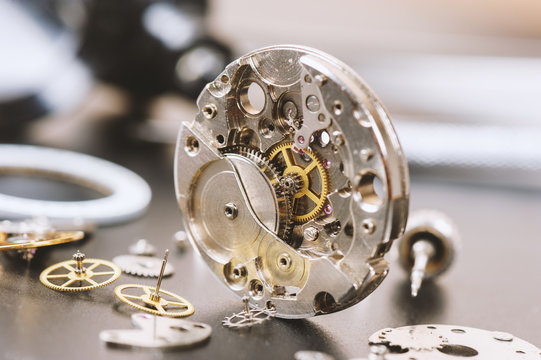Understanding Watch Parts: A Comprehensive Guide to Timepiece Components

Introduction
Watches have always been more than just timekeeping devices; they are exquisite pieces of craftsmanship, blending intricate mechanisms and stunning designs. Have you ever wondered what goes into the making of these marvels? In this comprehensive guide, we’ll delve into the world of watch parts, exploring the inner workings that bring life to these elegant timepieces.
1. The Watch Movement
At the heart of every watch lies the movement, also known as the caliber. The movement determines the watch’s accuracy and functionality. There are three main types of movements: mechanical, automatic, and quartz. Mechanical movements rely on hand-winding, while automatic movements self-wind through the wearer’s motion. Quartz movements, on the other hand, are battery-operated and incredibly accurate.
2. The Dial and Hands
The watch dial serves as the face of the timepiece, displaying the hour markers and numerals. The hands, usually consisting of an hour, minute, and second hand, sweep gracefully around the dial, indicating the time. These components not only add functionality but also contribute to the watch’s aesthetic appeal.
3. Watch Crystals
The watch crystal is the transparent cover that protects the dial and hands while allowing you to read the time. Common materials for watch crystals include mineral glass, acrylic, sapphire, and hardened synthetic materials. Sapphire crystals are highly scratch-resistant and offer superior clarity, making them a popular choice for luxury timepieces.
4. The Case and Bezel
The case houses all the internal components of the watch, including the movement. It comes in various shapes, such as round, square, or rectangular, catering to different style preferences. The bezel surrounds the watch crystal and can be stationary or rotating. Divers’ watches often feature a unidirectional rotating bezel for measuring elapsed time underwater.
5. Watch Straps or Bracelets
Watch straps and bracelets are integral to the comfort and style of a timepiece. Straps can be made from leather, rubber, fabric, or synthetic materials, offering versatility and a range of looks. Bracelets, typically made from metal, are durable and give a sophisticated appearance to the watch.
6. Crown and Pushers
The crown is a small knob on the side of the watch that allows you to set the time and date. In some models, the crown may also wind the watch manually. Pushers are additional buttons found on chronograph watches, enabling you to start, stop, and reset the stopwatch function.
7. Watch Movements and Complications
Within the watch movement, various additional features are called complications. These can include date displays, moon phases, chronographs, tourbillons, and more. Complications enhance the functionality of the watch and showcase the artistry of horology.
8. Water Resistance
Water resistance is an essential feature, especially for sports and diving watches. The level of water resistance is indicated in meters or atmospheres (ATM). It is crucial to understand the water resistance rating to prevent damage to the watch when exposed to water.
Conclusion
Watchmaking is a blend of science and art, with each timepiece having a unique story to tell. Understanding the various watch parts not only deepens our appreciation for these horological wonders but also helps us make informed decisions when choosing a timepiece that suits our style and needs.

